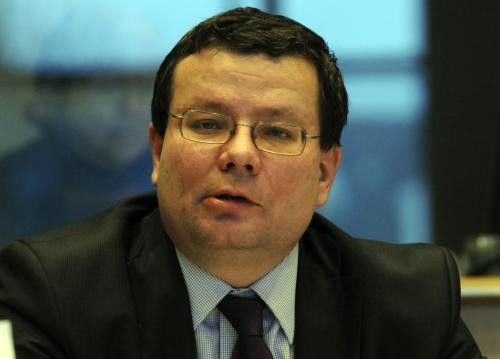In his goatee and mustache and tieless in a brown suit, Mr. Joseph had been lecturing for nearly 90 minutes on the unsustainable nature of the money-based economy — on cyclical consumption, planned obsolescence, corporate malfeasance and piles of poisonous waste. “It’s time that we wake up,” he intoned, speaking solemnly through a wireless clip-on mike. “The doomsday scenario, the big contraction, might be happening right now. The system of monetary exchange is — in the face of advancing technology — completely obsolete.”
This drew wild applause from the sold-out crowd, a patchwork of perhaps 900 people who paid $10 a head on Sunday night to sit in a packed auditorium at the Borough of Manhattan Community College on Chambers Street near the West Side Highway. Z-Day events were taking place from New England to New Zealand, but this was the big one: the marquee happening with the marquee names.
There, in the crowd, was Jacque Fresco, an industrial designer and the engineering guru of what people unironically called “the movement.” Mr. Fresco, an elfin 93-year-old, sat beside his partner, Roxanne Meadows, smiling self-effacingly.\
Mr. Joseph, back on stage, waited patiently as some of the crowd, still cheering, refused to leave their feet.
If the election of Barack Obama was supposed to denote the gradual demise of churlish, corporate governance and usher in a new, sustainable era of visionary change, there was little sign of it at the second annual meeting of the Worldwide Zeitgeist Movement, which, its organizers said, held 450 sister events in 70 countries around the globe.
“The mission of the movement is the application of the scientific method for social change,” Mr. Joseph announced by way of introduction. The evening, which began at 7 with a two-hour critique of monetary economics, became by midnight a utopian presentation of a money-free and computer-driven vision of the future, a wholesale reimagination of civilization, as if Karl Marx and Carl Sagan had hired John Lennon from his “Imagine” days to do no less than redesign the underlying structures of planetary life.
In other words, a not entirely inappropriate response to the zeitgeist itself, which one young man, a philosophy student in a roomy purple blazer, described before the show began as “the world as we know it coming to an end.” As the evening labored on with a Power Point presentation, a panel talk with Mr. Fresco and a spirited question and answer session, some basic themes emerged: modern economics is a fraud; global debt will crush the planet; society itself is dying from the profit motive; and people ought to wise up to the fact that more than legislation — or presidential administrations — needs to change.
Though they were never actually shown — as most in attendance had seen them several times — Mr. Joseph’s two films, “Zeitgeist, the Movie” (released in 2007) and “Zeitgeist: Addendum” (released last fall), were the subtext of the evening: online documentaries that have been watched, he says, by 50 million people around the world.
The former may be most famous for alleging that the attacks of Sept. 11 were an “inside job” perpetrated by a power-hungry government on its witless population, a point of view that Mr. Joseph said he has recently “moved away from.” Indeed, the second film, the focus of the event, was all but empty of such conspiratorial notions, directing its rhetoric and high production values toward posing a replacement for the evils of the banking system and a perilous economy of scarcity and debt.
That’s where Mr. Fresco came in, an author, lecturer and former aircraft engineer at Wright-Patterson Air Force Base in Ohio who has spent the last six decades working on the Venus Project, a futuristic society where (adjust your seatbelts, now) machines would control government and industry and safeguard the planet’s fragile resources by means of an artificially intelligent “earthwide autonomic sensor system” — a super-brain of sorts connected to, yes, all human knowledge.
If this sounds vaguely like a disaster scenario out of “2001: A Space Odyssey,” Mr. Fresco did not seem worried in the least. Machines are unemotional and unaggressive, unlike human beings, he told the crowd during the question-and-answer phase. “If you took your laptop and smashed it in front of 50 other laptops, trust me, none of them would care.”
The audience — white, black, young, old, baseball caps and business suits alike — received such words like a tonic, and the questions kept coming: What would family life be like in the future? What would happen if the automated system decided that a person had to die? Mr. Fresco and Ms. Meadows are planning the production of a major feature film to bring the Venus Project to a wider, global audience. Before the night began, Mr. Fresco, a small man with a V-neck sweater and a hearing aid, sat signing books and answering questions from a dozen or so college students gathered like acolytes at his feet.
As the evening came to a close, someone finally asked: So what would it take to actually put such a program into action? A grassroots movement, Mr. Joseph said.
“We already have a quarter-million members,” he insisted from the stage. “At the rate things are going, this will be at Madison Square Garden next year.”
A version of this article appeared in print on March 17, 2009, on page A24 of the New York edition.







